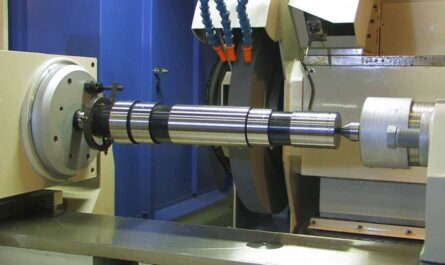The roof is one of the most crucial elements of any home or building as it provides shelter and protection from the elements. With advances in technology and materials, there are now various roofing systems available in the market to suit different needs and budgets. This article aims to provide an overview of the main types of roofing systems along with their key features and benefits.
Types of Roofing Systems
Made from asphalt and reinforcement materials, asphalt shingles are lightweight and come in a variety of styles and colors. They are fairly inexpensive and easy to install which makes them a popular choice for residential properties. Asphalt shingles have an average lifespan of 15-25 years depending on climate conditions and quality.
Some advantages of asphalt shingles include:
– Affordability – Asphalt shingles offer good value for money.
– Variety of styles and colors – Wide range of aesthetic options to match the exterior of homes.
– Lightweight – Easy to transport and install.
– Fire resistance – Provide adequate protection against fire hazards.
However, asphalt shingles also have some drawbacks. They are not as durable as other roofing materials and need to be replaced more frequently. Harsh weather conditions can also damage asphalt shingles over time.
Metal Roofing Systems
Metal roofing such as steel, aluminum, copper, and zinc alloy are durable roofing materials gaining popularity for both residential and commercial properties. Some key benefits of metal roofs include:
– Durability – With an average lifespan of 50-100 years, metal roofs are one of the longest lasting options. The material does not breakdown from sunlight or moisture like other roofing materials.
– Energy Efficiency – Metal roofs have a high reflectivity which reduces heat absorption keeping interiors cooler in summers and offering insulation in winters. This results in energy savings from HVAC costs.
– Low Maintenance – Metal roofs do not require frequent repairs or replacements. They withstand damage from hail, high winds, and other natural calamities better than asphalt or wood shingle roofs.
– Fire Resistance – Non-combustible metal materials offer excellent protection against fire and sparks in high-risk areas.
– Aesthetics – Manufacturers offer various color and styling options on metal roofing panels. Many architectural styles can be achieved with different finishes.
The main disadvantage is the higher upfront cost compared to asphalt shingles. Special tools may also be required during installation of some metal roofing systems. High reflectivity can also cause issues with television and satellite reception in some cases. Overall, the longevity and low maintenance needs of metal roofs make them a smart long-term investment.
Clay and Concrete Tile Roofing
Clay and concrete tiles are commonly used roofing materials, especially suited for Mediterranean, Spanish, or western architectural styles. They impart a very ornamental appearance and can significantly increase the aesthetic curb appeal of homes. Some notable advantages of clay/concrete tile roofing include:
– Durability – With an average lifespan of 50-100 years, clay and concrete tiles are exceptionally durable. They are resistant to fires, wind damage, and other weather extremes.
– Energy Efficiency – Offers insulation properties. The tiles’ weight keeps the roof system firmly in place during storms.
– Low Maintenance – With proper installation and regular maintenance, clay and concrete tiles can last significantly longer than other roofing materials.
– Curb Appeal – Variety of architectural styles, shapes and colors enhances the exterior look of properties. Clay and concrete tiles complement certain architectural designs exceptionally well.
The drawbacks include very high initial costs and heavier weight which results in additional expenses for structure reinforcement during installation compared to lighter roofing materials. Skilled professional installation is also required given the product’s weight and breakability. However, the longevity and curb appeal benefits often outweigh the upfront higher expenses for clay/concrete tile roofing in the long run.
Green Roofing Systems
With growing awareness around sustainability, green or vegetated roofing systems are gaining popularity. They provide environmental benefits while enhancing aesthetic and performance qualities of roofs. Some examples are:
– Extensive Green Roofs – Thinner lightweight systems planted with drought-resistant groundcovers requiring little maintenance. Often installed on flat or nearly flat roofs.
– Intensive Green Roofs – Deeper soil media supports wider variety of plants including small shrubs, trees, and vegetables. Installed on rooftops capable of supporting heavier load.
– Blue Roofs – Inclusion of stormwater collection and storage components allowing controlled release. Helps reduce burden on municipal stormwater drainage infrastructure.
Key benefits of green Roofing Systems include improved insulation, noise control, stormwater management and energy conservation through natural cooling. The vegetation absorbs heat and provides insulation reducing HVAC costs. It also retains and slows stormwater runoff helping alleviate flooding issues. Aesthetically green roofs enhance urban biodiversity and beautify buildings and neighborhoods. Disadvantages may include additional costs during installation and maintenance requirements to care for the vegetated layers. However, green roofs more than offset costs by providing multiple environmental and performance benefits over the long run.
Roofing Systems – Matching the Right Choice
As seen above, there are various high-quality roofing material options available matched to different properties, designs, budgets and priorities. While initial costs are a factor, it is important to consider the longevity, maintenance requirements, sustainability, and overall costs over the lifespan when selecting the right roofing system. Consulting local roofing professionals can help identify reliable products suited to the structure, climate, and performance goals to achieve maximum roof protection for years to come. With advances in technology and understanding of sustainability principles, roofing systems continue to evolve providing new options to enhance homes and buildings.
Note:
1. Source: Coherent Market Insights, Public sources, Desk research
2. We have leveraged AI tools to mine information and compile it




